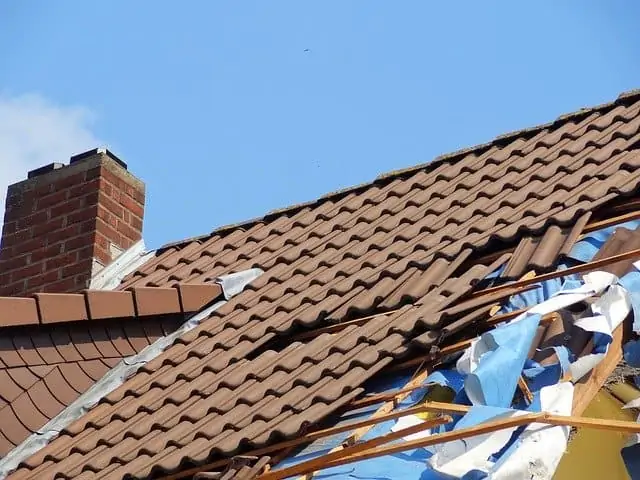
Knowing what to do after storm damage can make a big difference in what happens afterwards. It can impact everything from your furniture to your floors to your insurance claim to your vehicles. Not making the right decisions immediately afterwards can put your family, your belongings, and your wallet at risk.
As challenging as a large storm, natural disaster, hurricane, tropical storm, or storm damage recovery can be, you can take comfort in the fact that many have gone through similar experiences. This makes finding the direction you need a little easier. Once you know what to expect and learn all you can before a storm hits, you’ll be more prepared to restore things to normal as quickly as possible.
If you know what storm damage repair steps to take for your home or business, you can mitigate some of the damage and know what to expect moving forward. But first, what qualifies as storm damage?
What is Storm Damage?
Storm damage is any damage that is caused by a storm. This can include damage to homes, businesses, cars, and other property. Storms can occur anywhere, and they can be caused by a variety of factors, such as spring storms with high winds, tornadoes, heavy rain, hail, and winter storms such as snow or ice. It can be a very costly affair to repair or replace damaged property. Storms can happen at any time of year, and they often take people by surprise. As a result, it is important to understand how to recover from storm damage.
Steps to Storm Damage Repair
- Check Your Home for Damage
- Review and Assess the Damage
- Contact Your Insurance Provider
- Avoid Additional Damage Where Possible
- Choose the Right Contractor for home storm repair
1. Check Your Home For Storm Damage
After the storm has passed, you should check your home to learn the extent of the damage. Not all of it will be immediately obvious. Keep in mind there could be slippery areas, electrical lines broken and exposed, loose floor boards or ceiling tiles, etc. So before you do a thorough walk-thru, follow these safety tips:
How to Stay Safe When Checking Your Home After Storm Damage
- Before going out, check the local news to make sure that your area is safe.
- Watch out for hazards such as broken glass and exposed nails.
- Always assume that downed power lines are energized and dangerous. Stay at least 10 feet away and alert the police and utility company.
- Avoid standing water, particularly if there are nearby downed power lines.
- Where possible, avoid checking for water or storm damage after dark. If you do so, carry a flashlight instead of a candle or other open flame. This will alleviate the risk of a fire or explosion from a damaged gas line.
- Heavy winds and rain can create physical hazards such as collapsed roofing materials, window damage, collapsed walls or standing water in the basement or home interior.
If you do smell gas such as carbon monoxide—or suspect a leak—shut off the main gas line, open the windows, and immediately go outside. Notify the gas company and the proper authorities of the situation and don’t return until they’ve deemed your home to be safe.
2. Review and Assess the Damage to Your Home
Before you contact your insurance company to start a claim, you need to go take pictures of the damage. Often, these pictures are used to help the insurance adjuster access the damage. There are several areas of your home that are most vulnerable to storm damage.
Signs of Roof Storm Damage

Your roof is the most susceptible to costly damage. If a tree limb or other heavy debris fell on your roof during a storm such as a tornado, your home might have structural damage, so be cautious. Common signs of roof damage are:
- Holes in the roof
- Split seams
- Missing, broken, or dented shingles
- Granules collecting in gutters or downspouts
- Leaks in your roof or ceiling
- Dents on vents, gutters, or flashing
Signs of Other Home Damage from Storms: Wind Damage
Windows and doors are vulnerable to wind damage and flying debris. Inspect windows for cracks, holes, broken panes and damaged frames. Watch out for shards of glass, and be sure to board up broken windows until they can be fixed.
Look for storm damage to siding, paint, bricks and other exterior surfaces of your home. Also check outdoor appliances, like air conditioning units. You’re looking for dings, dents, cracks, splitting, holes, breaks chipping and discoloration.
As safely as you can, secure yourself and remove debris from roof, gutters and make sure downspouts are intact to continue to divert water away from your property.
If there are extended power outages and you have a sump pump, there may be standing water in your basement.
- Do not step in standing water without first making sure power is turned off to avoid risk of electrocution
- If possible, turn the sump pump back on to discharge water from the area. Plumbers are able to fix broken sump pumps
Each of the different types of flood damage can cause mold if left for too long, so make sure to check for mold growth. If you notice mold, our team at Jenkins Environmental can help you remove it before moving back in.
3. Contact Your Insurance Provider
If you have insurance, you should get compensation if your home or business gets damaged by a storm. You need to document the loss you’ve suffered as a result of the storm. Take photos of the damage before anything has been moved or removed, and document any extra costs that you incur because of the damage.
Don’t forget to keep receipts for hotel costs and other temporary living expenses. You’ll need all of this for your insurance claim.
Your homeowner’s insurance provider will instruct you on the next steps to take in making a claim and provide you with a claim number and a list of local emergency service providers, like the experts at Jenkins Restorations that will help you restore your home as quickly as possible. The agent will help answer questions about your claims and determine if the damage will be covered by your plan.
Your insurer will usually coordinate the work to be done to restore your home, so make sure that you’re on top of knowing who is coming to your home and when.
4. Avoid Additional Home Damage Where Possible
When it’s time to start storm damage repair, begin with what you can fix yourself. Often, the storm might not have damaged your home completely and it can be restored with repairs. If you can properly repair some of the damage, you should get to it immediately as you seek professional repair services for the other parts.
Immediate repairs can also help prevent more damage. If water and wind are getting into your home (through a broken window for example) you should go ahead and board up the window as soon as possible. This will prevent further damage to your property.
If you don’t feel comfortable doing the job yourself, you may need a board-up service to secure your property. Jenkins Restorations works 24/7 and can be there day or night for emergency service.
5. Begin Storm Damage Repair – Choose the Right Contractor
It’s important to hire a professional and trustworthy contractor to help you recover your home from storm damage. Poor or incomplete restoration will leave you with an unhealthy home for your family. Any time there is potential water damage, mold can begin growing immediately as well. It’s critical to address and remedy this as soon as possible to avoid additional damage and health risk.
A restoration company can take that responsibility off of your shoulders. Simply choose the company, and they will handle all communications between contractors and insurance companies and begin the process of storm damage repair.
When severe weather strikes, it can be devastating to your family or business. Whatever your situation is, when you need storm damage repair completed quickly and efficiently, contact a storm damage restoration company that specialized in getting your property back to pre-damaged conditions. Jenkins Restorations will do that and much more, including a free quote and time estimate on the storm damage repairs required.
Frequently Asked Questions
How to recover from a tornado?
After a tornado, you need to clean up any debris and remove anything that could be dangerous. When you go outside, be careful of any downed power lines. Lastly, you need to assess the damage and decide whether you need to rebuild.
How to protect windows from storm damage
If you live in an area where storms are common, you should invest in window protection. The best way to protect your windows is to install storm shutters. These are easy to install and can be used for both residential and commercial properties.
Can hail storms damage solar panels?
Hail storms can damage solar panels, but they usually don’t cause much damage. Solar panels are designed to withstand strong winds and heavy rain. However, if you live in a region where hail storms are common, then you should consider installing a protective cover for your solar panels.
What kind of damage can Powerful storms do?
Powerful storms can bring down trees, power poles, and even entire buildings. They can also cause major damages homes and businesses, including power outages.
